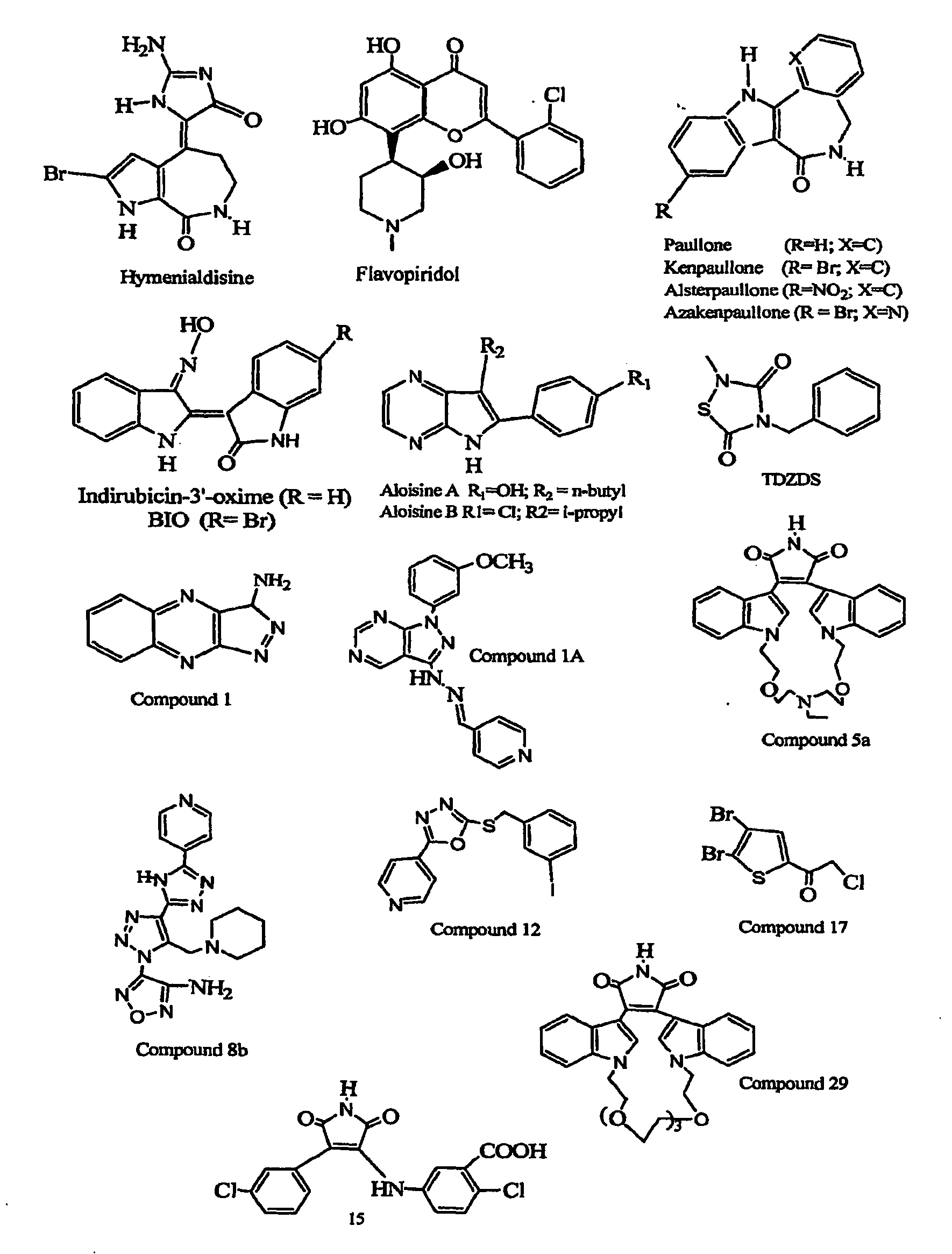Inhibition of Glycogen Synthase Kinase and Methods of Treating Autoimmune or Immune Inflammatory Disease
a glycogen synthase and inhibitor technology, applied in the field of glycogen synthase kinase 3 inhibitors, can solve the problems of complex relationship between dc function and dcs, inability of e-cadherin-stimulated dcs to release immunostimulatory cytokines, and inability to fully prime cd4 t cell immunity. , to achieve the effect of favorable disposition of disease sta
- Summary
- Abstract
- Description
- Claims
- Application Information
AI Technical Summary
Benefits of technology
Problems solved by technology
Method used
Image
Examples
Embodiment Construction
[0050]The following terms are used throughout the present specification to describe the invention.
[0051]The term “patient” or “subject” refers to an animal, preferably a mammal, even more preferably a human, in need of treatment or therapy to which GSK3 inhibitors according to the present invention are administered in order to treat an autoimmune disease, especially a condition or disease state associated with an autoimmune disease as otherwise described herein.
[0052]The term “compound” is used herein to refer to any specific chemical compound disclosed herein. Within its use in context, the term generally refers to a single compound, generally a small molecule inhibitor of GSK3.
[0053]The term “glycogen synthase kinase 3” is used to describe a serine / threonine protein kinase. Glycogen synthase kinase-3 (GSK-3) is a serine / threonine protein kinase encoded by two highly homologous and ubiquitously expressed genes. The catalytic domains of mammalian GSK-3K and GSK-3L are 95% identical ...
PUM
| Property | Measurement | Unit |
|---|---|---|
| Cell angle | aaaaa | aaaaa |
Abstract
Description
Claims
Application Information
 Login to View More
Login to View More - R&D
- Intellectual Property
- Life Sciences
- Materials
- Tech Scout
- Unparalleled Data Quality
- Higher Quality Content
- 60% Fewer Hallucinations
Browse by: Latest US Patents, China's latest patents, Technical Efficacy Thesaurus, Application Domain, Technology Topic, Popular Technical Reports.
© 2025 PatSnap. All rights reserved.Legal|Privacy policy|Modern Slavery Act Transparency Statement|Sitemap|About US| Contact US: help@patsnap.com



